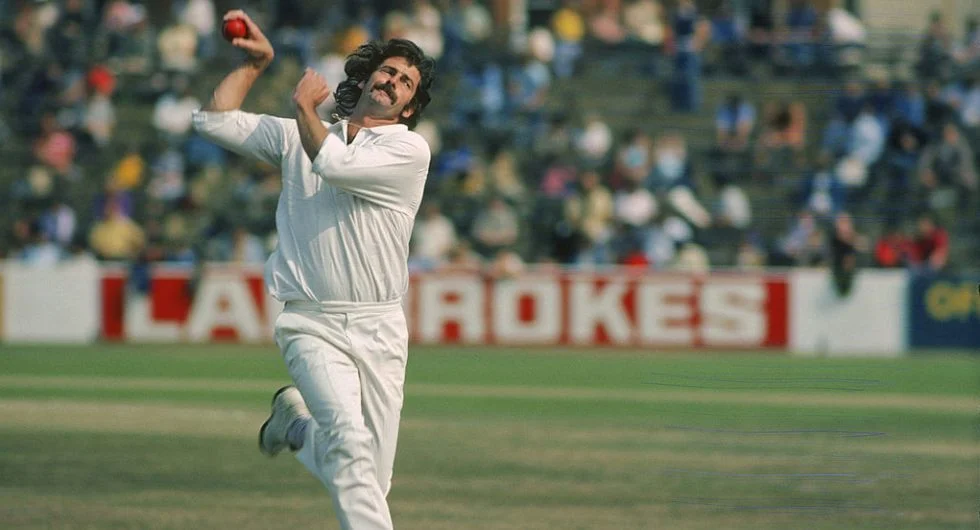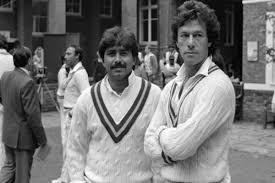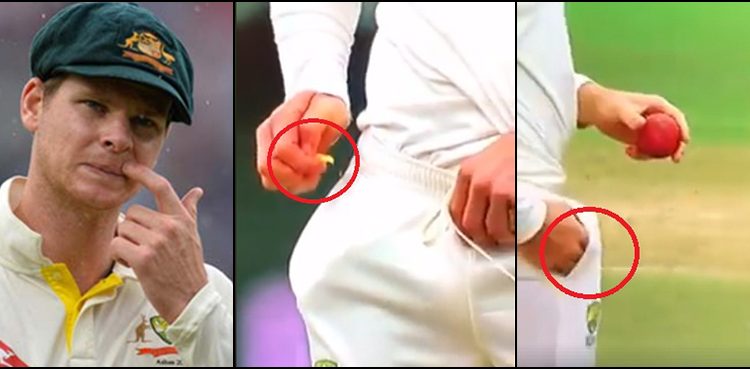

Legendary Australian pacer Dennis Lillee was a fine exponent of reverse swing.
Sarfaraz Nawaz of Pakistan was one of the earliest and finest performers of reverse swing. He is said to have passed on the knowledge to his captain, Imran Khan. They also noticed that they could use the dry pitches of Pakistan to good effect to reverse swing the ball.

Sarfaraz Nawaz and Imran Khan were chief architects in making reverse swing the deadly weapon that it is today.
Later on, Pakistan also produced two more greats of reverse swing in Wasim Akram and Waqar Younis. The two formed a devastating fast bowling pair which wreaked havoc all around the world, with reverse swing being the chief weapon in their arsenal. While Pakistan were clearly leading the way as far as reverse swing was concerned, the rest of the cricketing fraternity started developing their own methods to extract reverse swing by the mid 1990s as well. By 2000s, the term “reverse swing” was coined and the whole world had acknowledged and accepted it.
Wasim Akram and his mastery over the art of reverse swing were a connoisseur's delight.
Just like any other new theory in practice, reverse swing has had its fair share of obstacles as well. For a long time, the practitioners of reverse swing were accused of cheating. Over the years, the perception of the world towards reverse swing has changed and now it is seen as a skill rather than being seen as a dark art. But still, there have been several instances where teams have used foreign objects like Vaseline, Brylcreem, wax or tried picking the ball using bottle caps, knives or nails and even bit the ball in order to “prepare” the ball for reverse swing. The infamous sandpaper-gate from the 2018 Australia-South Africa series is one of the most recent and standout events of that kind.

The unique(and perhaps foolish) ways of ball tampering.

The sandpaper gate incident shook the roots and morales of Australian Cricket.
As the name suggests, in reverse swing the ball swings in a direction opposite to that of conventional swing. When delivered at high speeds, the ball starts to swing against the direction of seam. That is called reverse swing. The beauty of reverse swing lies in the fact that a predominantly outswing bowler can bowl inswingers and conversely a predominantly inswing bowler can bowl outswingers as well, without changing his grip or bowling action.
A naturally outswing bowler, Steyn was able to bowl inswingers with the old ball.
In reverse swing, the flow is turbulent on both sides – due to roughness on the non-seam side and due to high speed on the seam side. Hence, if the non-seam side is roughed up or the ball is delivered at very high speeds, the laminar boundary layer becomes turbulent almost immediately, more importantly before reaching the seam location. The seam has a detrimental effect on the turbulent boundary layer by making it thicker and weaker because of the high speed and separates relatively earlier compared to conventional swing. But due to an earlier separation on the seam-side, as opposed to conventional swing, the pressure gradient would now flip. There is more turbulence on the non-seam side, higher airspeed and hence by the Bernoulli’s principle, lower pressure. This results in switching of the asymmetry and consequently the side force in comparison to conventional swing. This would mean that the air pushes the ball towards the non-seam side leading to reverse swing.
The scientific principles behind the phenomenon of revrse swing.
It is easier to achieve reverse swing if the non-seam side is roughed up to achieve turbulence at lower speeds. In other words, if the ball is tampered or scuffed up then reverse swing can be achieved at lower speeds. Even a new ball can be reverse swung but only when delivered at very high speeds. And if one continues to bowl at such high speeds, he will get only reverse swing and never get conventional swing. This means that the fastest bowlers in the world will produce reverse swing even when the ball is new. So, is it impossible for comparatively slower bowlers i.e., the ones who bowl below the critical speed to make the ball reverse swing? Certainly not. That is where the roughness of the surface comes into the play. As the roughness on the side of the ball facing the batsman is increased the critical bowling speed limit for reverse swing is reduced. And hence, reverse swing is achieved.
One of the most common misconceptions about reverse swing is that it occurs due to an imbalance of weight between the two sides of the ball. But it is one of the most baseless opinion that has no scientific proof to itself at all. The perfect condition for a ball to perform reverse swing is when one side is very smooth and other is very rough. The condition of the upper surface behind the seam of the ball is not very critical. But as it turns out, there is another advantage of creating a contrast in roughness of the surface of the ball.